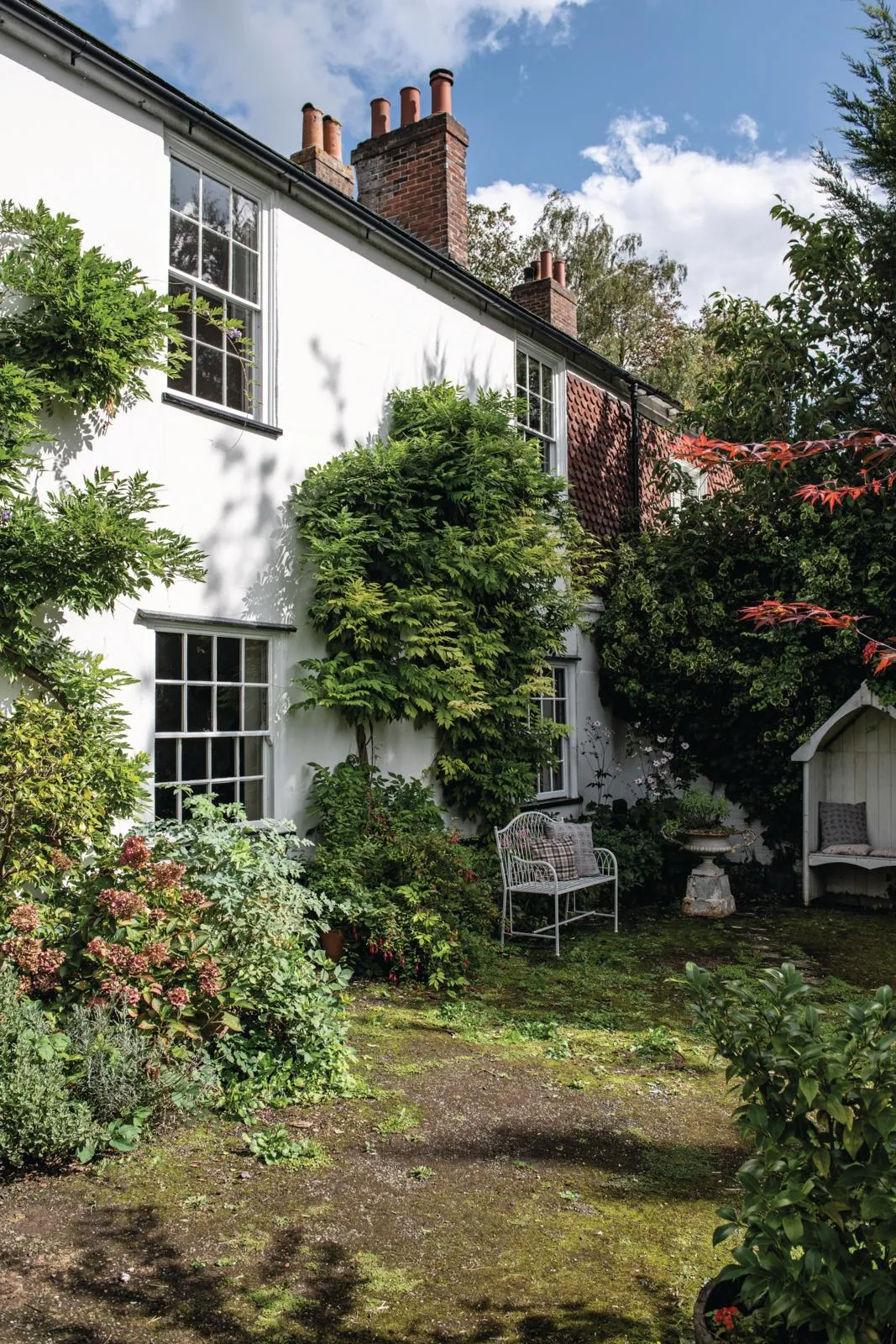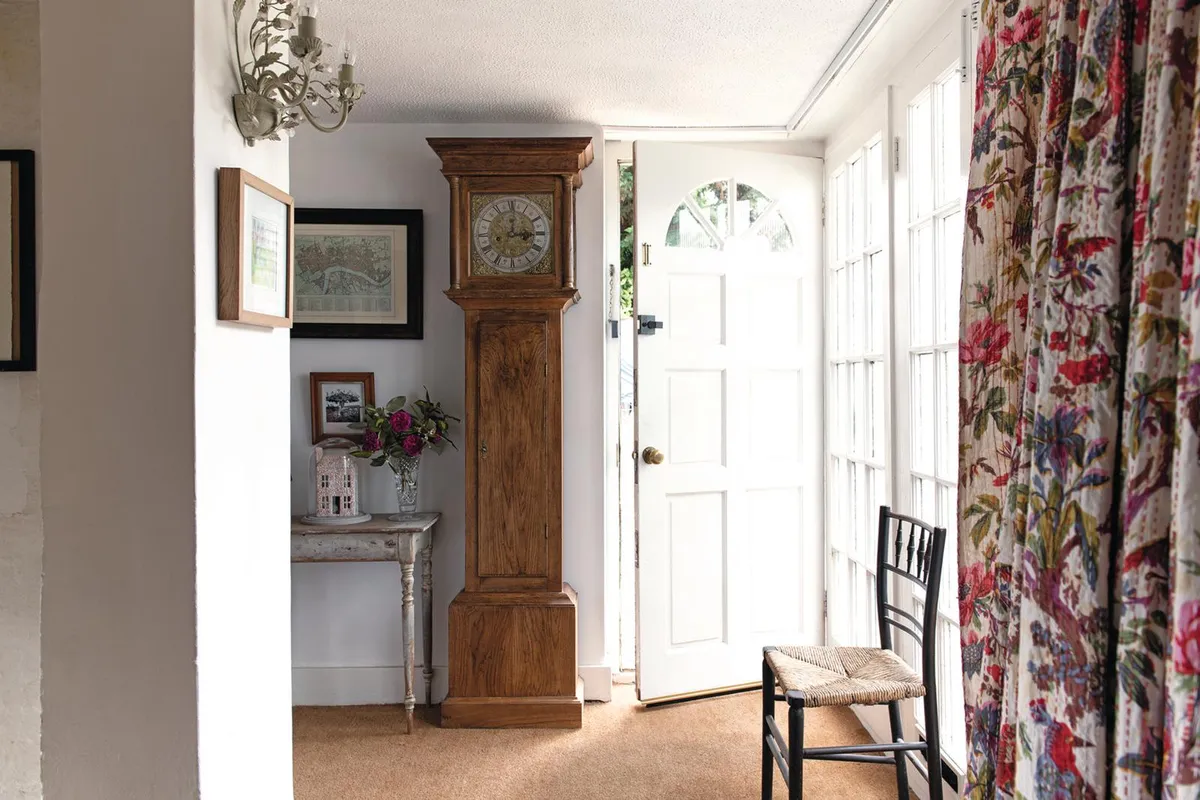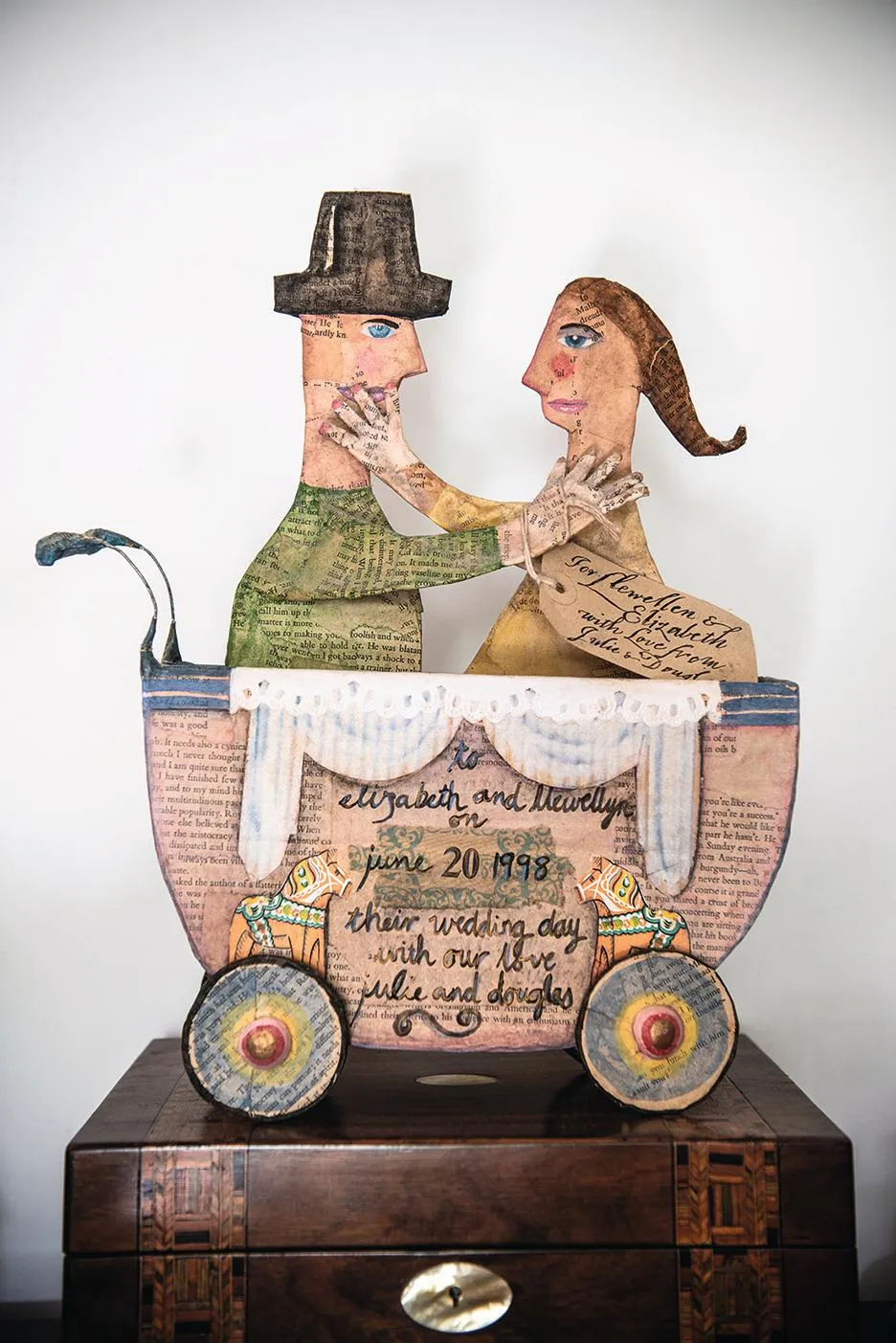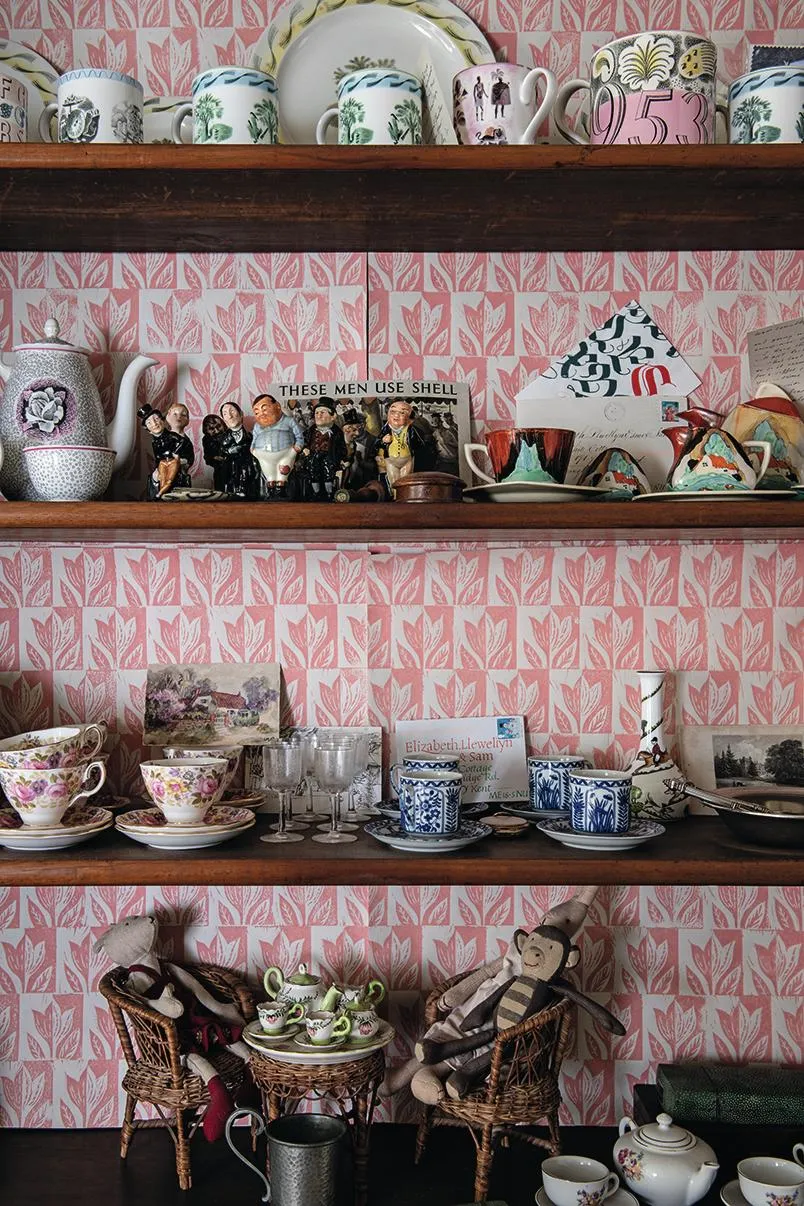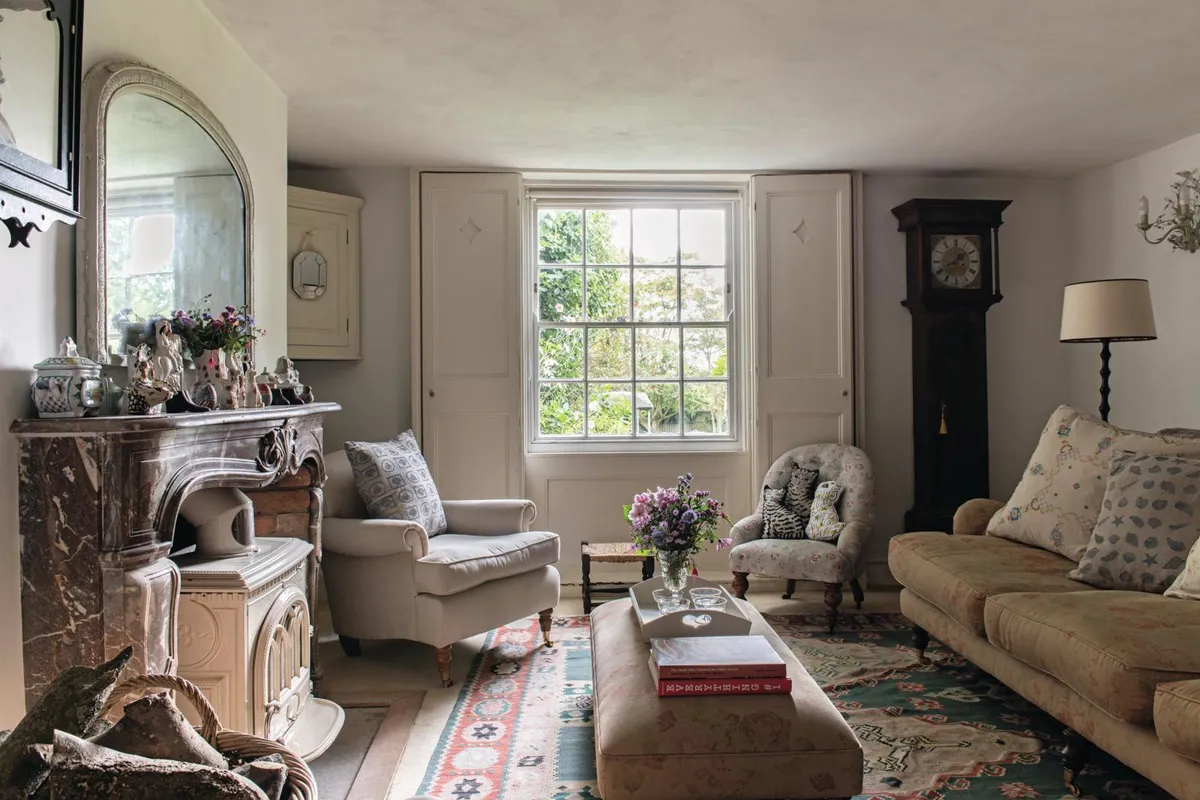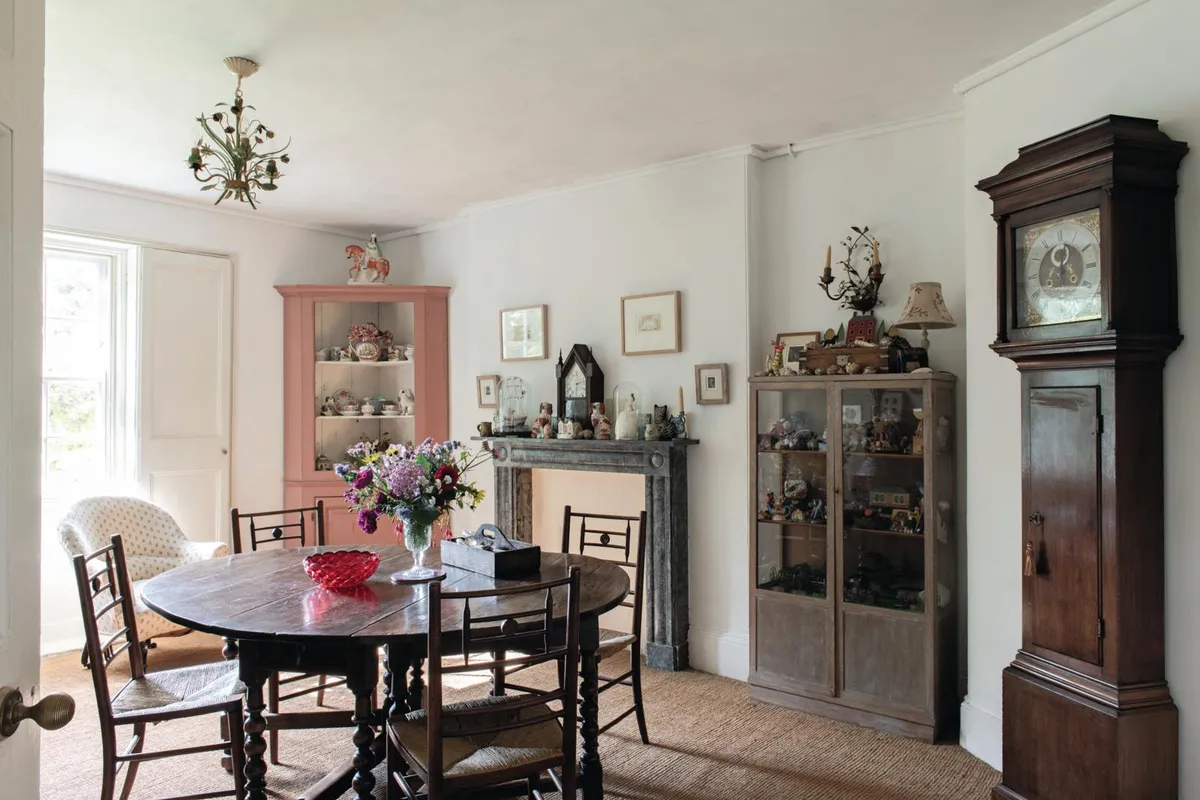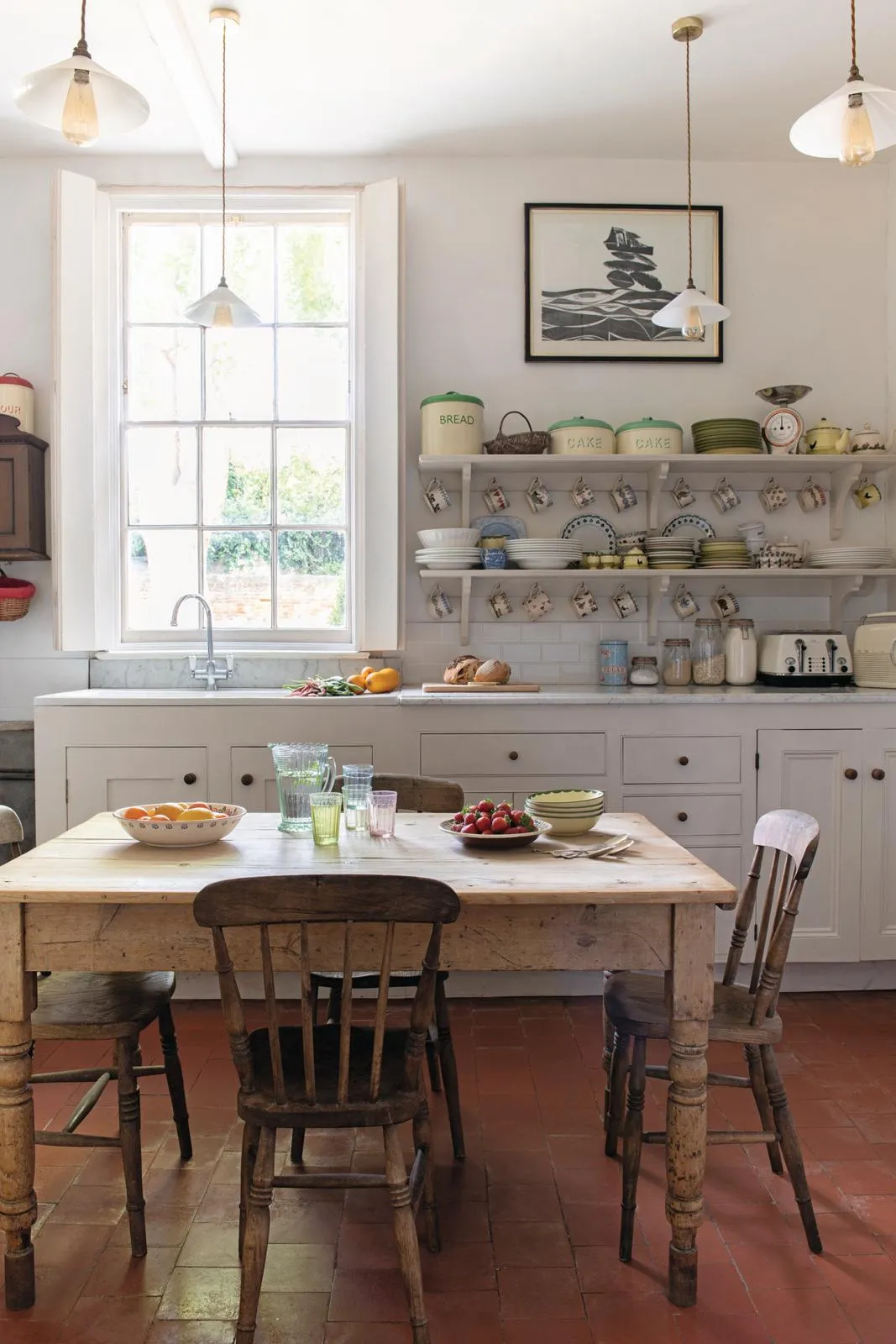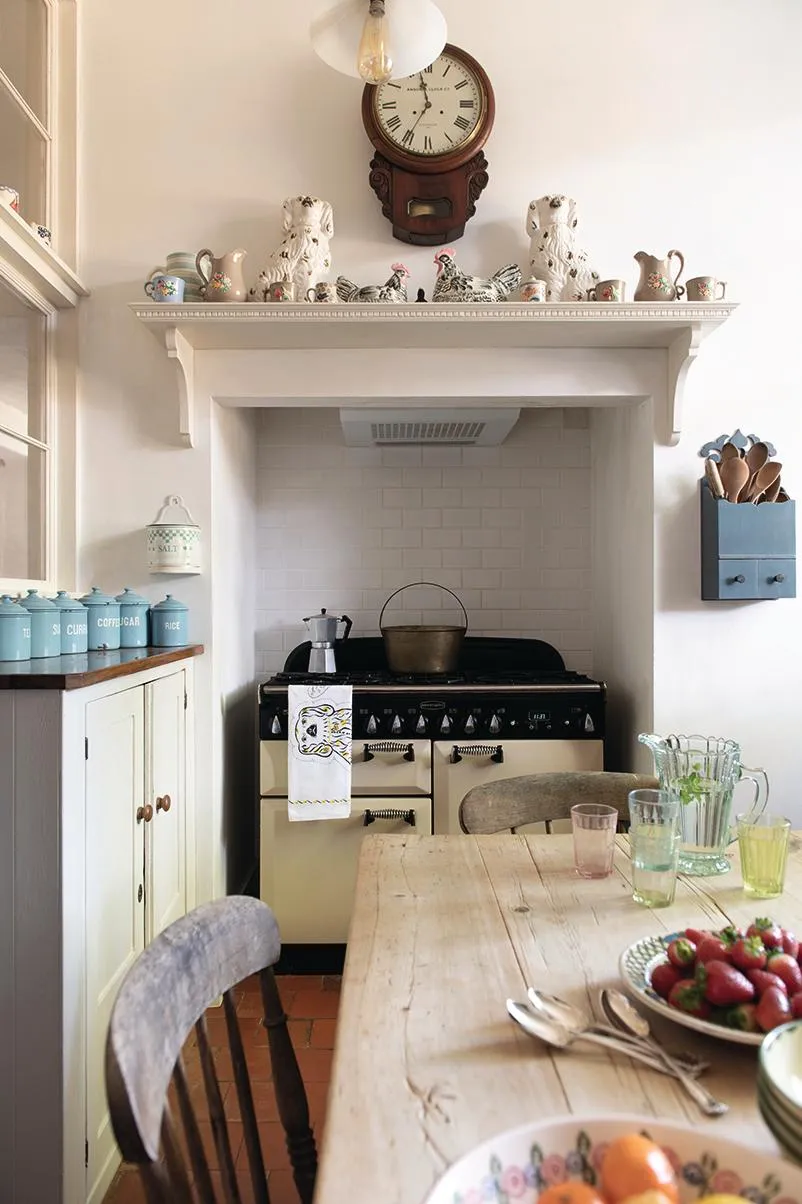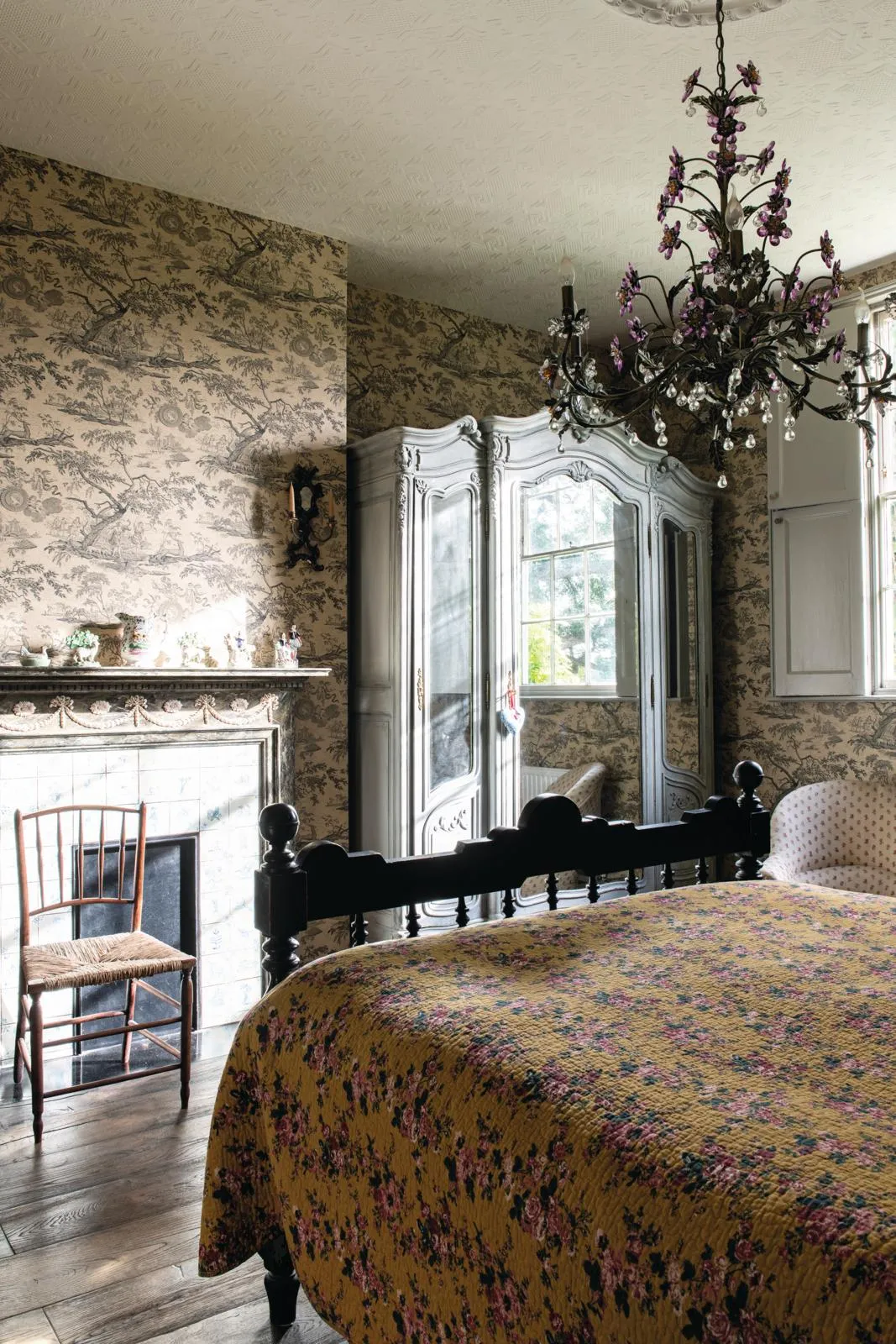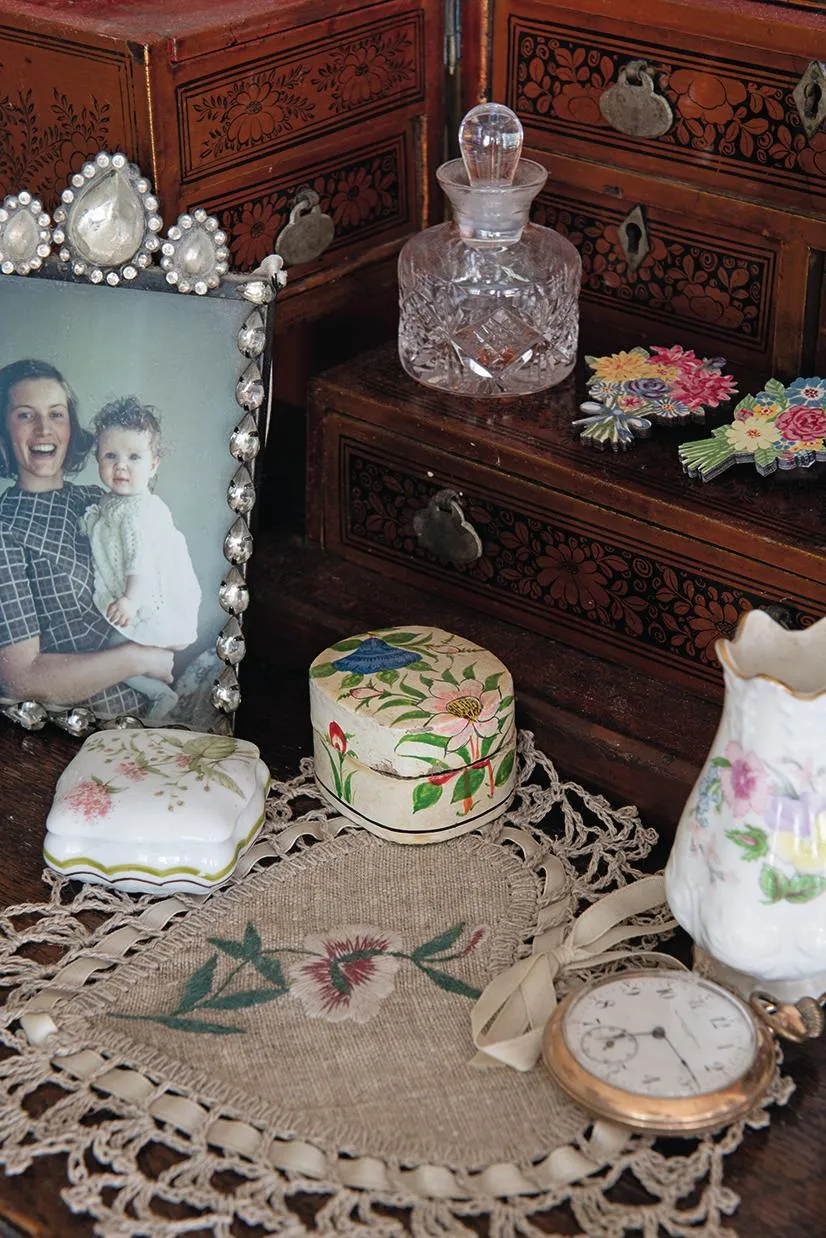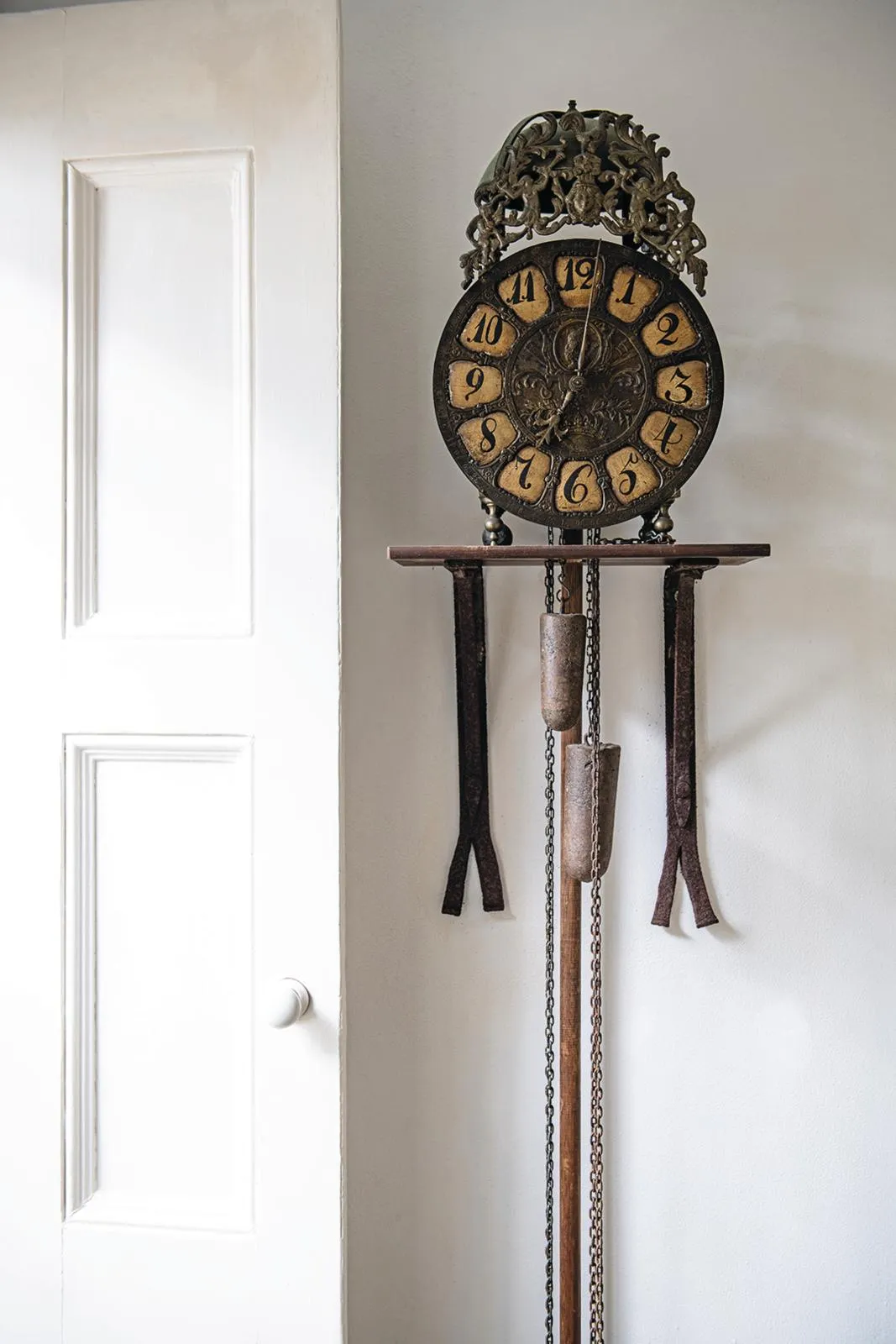Time hangs in the air, with clocks ticking and striking the hours at the Georgian home of artists Elizabeth Harbour and Llewellyn Thomas. ‘Clocks are part of my family history,’ Llewellyn explains, ‘and everyone notices the ticking when they visit us for the first time. For us it’s part of the soundscape of this house and tells us we’re home.’
Long before the clocks came to live with them, the couple were both students at the Royal College of Art, studying illustration. The move from London to Kent in 2005 was brought about by their decision to find a family home with their two young children, and to get Llewellyn closer to Maidstone College of Art where he was then teaching.
They purchased half of this Grade II-listed village rectory, built in 1732, for its location, style and size. Llewellyn’s research affirmed his belief that an ambitious rector called on Queen Anne’s Bounty, a scheme that increased the salaries of poor clergymen, to deliver a 10-bedroom rectory to satisfy his pretensions.
Even half of this splendid residence gave the new owners exceptional space, including room for a studio at the top of the house. Artistic space has always been essential for the couple to sustain their working life together as printmakers and designers. And as well as selling their own works, Elizabeth also runs classes in local village halls.
You might also like how to set up an antique longcase clock
Llewellyn discovered further talents while improving the house: it transpired that he was a bit of a builder, when he rebuilt the front garden wall brick by brick. Next he replaced the south wall of the kitchen with a Georgian glazed screen of his own design that allows light to stream through the kitchen window into the hall.
His understanding of historic design practice is such that he knew where to find the correct antique muff blown glass and lambs tongue moulding to complete the screen. Then he hand-built the kitchen cabinets, sourcing old doors as well as making new ones. All the shutters in the house were folded back and sealed up, so he restored those and constructed new ones for windows that didn’t have any.
The authentic approach the couple have taken to alterations in the house is matched by the choices they made when furnishing and decorating rooms. Very little is new, beyond the pieces Elizabeth and Llewellyn make themselves. The collection of antique clocks is a significant presence, of course, in the main rooms and hallway.
‘They have come from my father,’ Llewellyn explains. ‘He was an amateur antiquarian horologist and my mother painted more than 3,500 clock dials for the antique clock trade.’ The family connection is particularly evident in the William Cook clock that stands beside the front door. Cook was a London maker and, though the movement dates from around 1700, the clock case was made by Llewellyn’s father using oak from trees that fell down on family land on the Surrey border in the Great Storm of 1987.
The clock in the dining room is a 30-hour movement by John Thomas, a West Country maker, and dates from 1730. ‘It’s a curiosity,’ Llewellyn explains, ‘because the case is in solid mahogany rather than the usual veneer on pine. This extravagance was perhaps possible because of easy access to the port at Exeter, where timber was imported.’ The clock at the end of the hall is a John Harrison regulator.
Harrison was the man who, in 1735, worked out how to calculate longitude and this clock, made between 1977 and 1996 by Andrew King of Beckenham, is an exact replica of the one in the Science Museum. On the landing, a Louis XIV-style French lantern clock from 1710 would appeal to antiquarians, Llewellyn suggests.
The clocks add scale and status to the house, but Elizabeth and Llewellyn also love to visit antiques shops to collect small items to decorate mantels and chests, side tables and cupboards. Staffordshire figures jostle a Mary Wondrausch mermaid on the sitting room mantel.
‘She revived the 17th-century English slipware pottery tradition,’ Llewellyn volunteers. A shelf along the wall hosts pieces from a Clarice Cliff tea set that belonged to Elizabeth’s grandmother, a teapot with a rose motif designed by Graham Sutherland and mugs and plates by Eric Ravilious.
You might also like a farmhouse-inspired home filled with antiques
Another special piece in the room is known in the family as the ‘Brontë Box’. ‘I spotted these dolls in an antiques shop in Lewes,’ Elizabeth recalls. ‘They are early 19th-century wooden Dutch peg dolls in their original clothing. Our daughter Esme was with us and had been watching a programme about the Brontë sisters and said she thought they were the Brontës, so that’s what we’ve called them ever since.’
The dolls are housed in a wall-mounted box Llewellyn made in an 18th-century English folk art style, lined with antique-style wallpaper and featuring old letters, some in French, tucked in for extra context. ‘We’ve always collected decorative papers,’ Elizabeth says, ‘and now we’re adding to that tradition by making our own.’
Elizabeth describes the spirit of their house as ‘reassuring’, with the decorations she makes inspired by their antiques, including the Staffordshire dogs. ‘I wouldn’t have come up with so many ideas without the stimulation of these surroundings,’ she reveals. ‘It’s been a catalyst for that, and the generous space allows us both to work across rooms; I can print in the kitchen and lay the prints all down the long hall to dry, while Llewellyn settles in the dining room, working up designs for printed paper to cover keepsake boxes, then cutting the designs in lino.’
This companionable way of working is well established and unsurprisingly activates the positive current of time and motion running through this house, where old clocks chime and art never stops.
